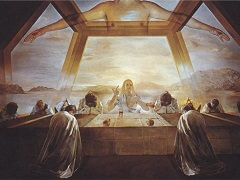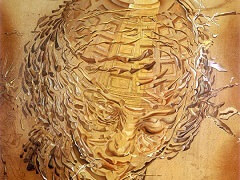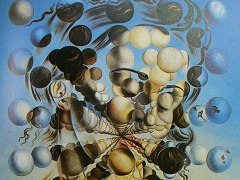Retrospective Bust of a Woman, 1933 by Salvador Dali

Several of Dali's obsessions translate into elements of this now iconic work. Atop the head of the naked painted porcelain woman is a kind of hat comprised of a bread loaf and a double-pen ink well, the latter based on Jean Millet's widely-known painting, The Angelus. Most anyone who follows Dali's art knows that this painting intrigued, haunted and obsessed Dali all his life - ever since he first saw a reproduction of it hanging in his grade school.
Millet's famous picture is of a poor peasant couple facing each other in a field, lamenting the death of their child. The woman's hands ore clasped together and her head is bowed in a prayerful pose. Dali's various interpretations of the motif are essentially sexual suggesting that the woman is akin to the preying mantis, paging pre-coital homage to her mate before eventually devouring him. According to Dali the man had his hat lowered to conceal an erection. This allusion suggests a key Freudian concept of castration anxiety that Dali was keen to explore within his 'paranoid-critical' method. In another depiction Millet's Architectonic Angelus, Dali uses biomorphic forms that depict the probe of the female mantis penetrating the male, its phallic tenure by a female alluding to the ideal androgyny that had possession of both male and female genitalia.
Dali's obsession is analogous to his reading and understanding of The Interpretation of Dreams by Sigmund Freud, revealing repressed desires and fantasies.























